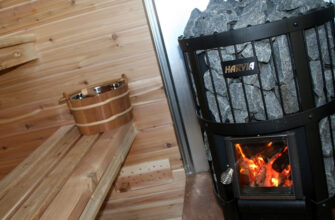The roller is a machine or part of a machine, used for rolling or compacting a road. In this article, we will introduce you to the history of the appearance of a machine used to compact the earth or road surface..

Foreword
Many people, building your cottages or houses, prefer to independently design and carry out construction work. An important part of this is the construction of the road, and here you can’t do without a skating rink. Where to get it? Buying is not smart, better to rent. Of course, you can type in a search engine vibratory roller rent tons and you will see many options for offers, but if you do not want to make a mistake with the choice of the company, we recommend that you immediately call the Asphalt Techno company by phone +7 (926) 996-0203 and you will select the desired model. But do you know the history of occurrence and are you familiar with the main types of road roller??
Definition and application
Rollers are designed for work related to the construction of roads and other structures, in which compaction of soil and gravel is necessary. Wheels are the working part, in turn, the main physical quantity, associated with the result of work is the specific pressure on the surface, on which the skating rink moves. The use as a soil compaction machine is closely related to the type and design of the working elements..
Static apply, usually, for compacting stony soils, but also well proven in the case of compaction of clayey, loamy and medium moisture soils. Universal rollers are used to compact the road surface after preliminary compaction with static.
Ten times more effective results can be achieved with a vibrating roller. In turn, the compaction of bitumen and soils containing large fractions is carried out by models moving on pneumatic wheels.. The latter are also used to compact wet and sandy soils..
History of appearance
Small road rollers made from a tree trunk were used in antiquity.. The first versions were drawn by horses. The metal version was first proposed by the Englishman John Shotbolt in 1619 year. Since the efficiency of the roller is largely dependent on the weight, it was gradually increased – the first report on the use of a roller weighing more than a ton appeared in 1725 year.

The next step was to create 1787 Louis-Alexandre de Chezart horse-drawn cast-iron road roller wide 2,5 m, diameter 90 centimeters and weight 3,5 tons. This type has been used since 1815 years in France, England and Hanover, but became popular only after 1830 of the year.

IN 1859 The first steam roller appeared in France, it was created by the designer Lemoine, but due to failed tests, it was not put into production. Model only 1862 of the year, weighing 17,5 tons driven by a steam engine with a capacity of 3,5 kW was successful and put into production along with weight models 8,5 and 15 tons by the company “Gellert and Cie” in Paris at 1864 year.

Shouldn't hide, that the development of road rollers was inextricably linked with the construction of new roads. Therefore, despite the clear advantages, the popularity of steam rollers developed slowly..
Only in 1967 the British saw a prospect in them and opened their production. Then in 1902 year in England was designed and in 1903 produced the first ice rink with an internal combustion engine.
current models (in terms of impact on the ground) can be divided into:
- static – act on their own weight, to a shallow depth. Most often used for final road works, rammers of the upper layers of embankments, compaction of bedding under the foundation and much more;
- vibrating – characterized by simultaneous static and dynamic effects. Their depth of influence reaches 2 m.






